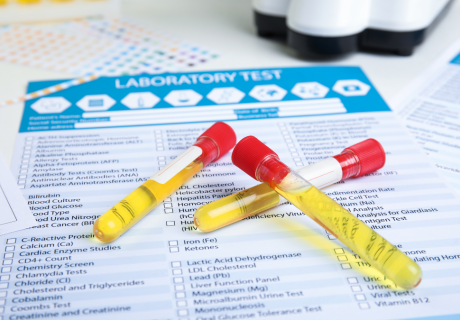ADHD Continues to Rise in the United States

According to a new national study, it is estimated that one in nine American children have attention deficit hyperactivity disorder (ADHD). The study revealed that one million more children were diagnosed with ADHD in 2022 compared to 2016, which is a significant increase over those six years.
Why the increase? It's complicated, says integrative pediatrician Sanford Newmark, MD, who identifies four key contributors:
- Children who have ADHD, which would have been overlooked in the past, are now being diagnosed.
- The definition used to diagnose ADHD has been loosened, so more children are being diagnosed.
- Children are being misdiagnosed because of diagnoses based on inadequate evaluations.
- More children do have ADHD because of nutritional factors, environmental toxins, and several socioeconomic factors.
Dr. Newmark emphasizes that ADHD is a “contextual diagnosis.”
"The diagnosis of ADHD is dependent on family, school, and community issues," said Dr. Newmark, who is a Clinical Professor with the Osher Center for Integrative Health at the University of California, San Francisco. "For example, what looks like ADHD to one set of parents or teachers may seem like a healthy, active child to another. Does that child actually have ADHD or not?”
Diagnosing ADHD
Diagnosing ADHD is inherently subjective as it requires input about behaviors from parents, teachers, and the child. The DSM-5 Diagnostic Criteria for ADHD identifies a wide range of symptoms and if symptoms and/or behaviors have been present for six months or more in two or more settings such as home, school, etc., the child may have ADHD. In addition, if symptoms are negatively impacting academic and/or social functioning, the child may be diagnosed with ADHD.
“Standardized forms like the Conners and Vanderbilt can be helpful but are not considered adequate as a stand-alone diagnostic tool,” explained Dr. Newmark, who emphasized that a thorough evaluation, including a complete history, is needed for an accurate diagnosis of ADHD.
The American Association of Family Physicians has identified several screening and assessment tools designed to help diagnose ADHD and assess quality of life issues, as well as rule out other possible causes of the symptoms.
“Comorbid conditions such as associated learning or emotional issues like anxiety or learning disabilities need to be examined,” said Dr. Newmark.
Complex ADHD
The present study also found that among the children diagnosed with ADHD, nearly 78 percent of them have at least one co-occurring disorder, which is known as complex ADHD. The Society for Developmental and Behavioral Pediatrics describes this condition as ADHD combined with one or more learning, neurodevelopment, or psychiatric disorders with common comorbid conditions including anxiety, depression, and autism spectrum disorder.
“The principles of treating complex ADHD are similar,” said Dr. Newmark. “It is treated differently only in the sense that it is even more important for treatment to be aimed at the well-being of the entire child, not just the ADHD symptoms.”
In 2020, the Society for Developmental and Behavioral Pediatrics published its guidelines regarding the assessment and treatment of complex ADHD, emphasizing the significant impairments that can negatively impact quality of life and physical or mental health in this patient population.
The authors of the guidelines conclude, “Treatment for children and adolescents with complex ADHD should focus on improvement in function, with the goal of improved long-term functional outcomes, not merely improvement in core ADHD symptoms.”
An Integrative Approach
As with any integrative treatment protocol, treating ADHD features a comprehensive look at lifestyle factors, nutrition, and potentially dietary supplements.
For example, a review from last year found that a healthy diet low in artificial food colors and reduced food sensitivities (aka the “few-foods diet”) shows promise in treating ADHD. The paper also highlighted the potential of micronutrient supplementation, omega-3 fatty acids, and probiotics.
“Simple lab tests like CBC, ferritin, zinc, and vitamin D may yield treatable deficiencies,” said Dr. Newmark. “Foundational treatment strategies should include a strong focus on nutrition, sleep, exercise, and behavioral management.”




















SHARE